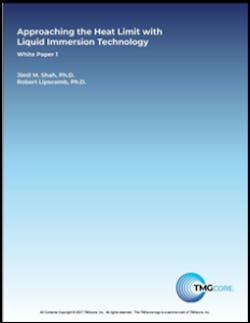One of the most critical challenges facing computing technology is how to deal with heat. Traditional air cooling remains the most common method of managing temperatures in data centers, but it has its limitations. Liquid cooling offers a less costly and more sustainable alternative, and recent advances in the technology and its deployment are driving change across the industry. Liquid immersion cooling is allowing data centers to push the heat limit.
This white paper from TMGcore explores some of the opportunities and limitations of liquid immersion cooling. First, the paper compares seven traditional liquid cooling technologies in terms of efficiency, density and practicality.
The paper then dives into the pros and cons of immersion cooling, where servers are submerged in a dielectric liquid. This method reduces energy consumption while allowing to growing load density. The paper presents analysis on liquid cooling capacity and potential by comparing single-phase and two-phase heat transfer modes, passive and forced convection modes, containment methods, and fluid chemistry.
